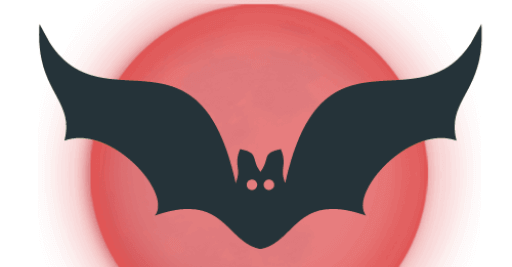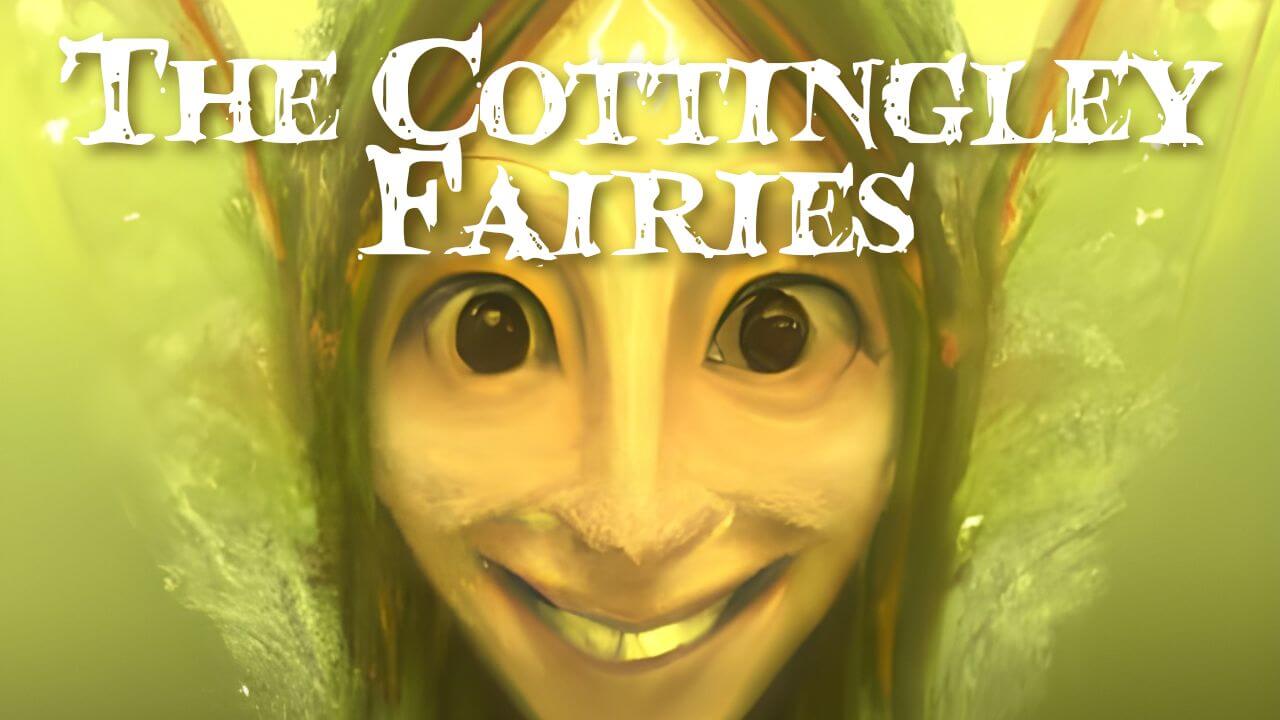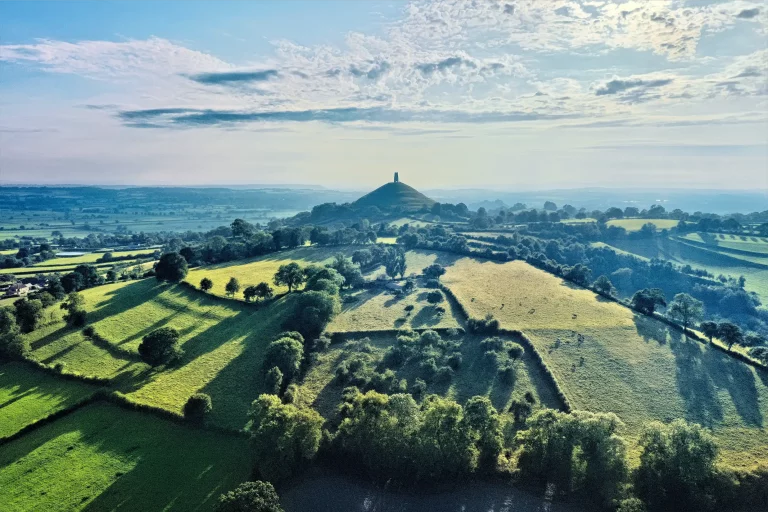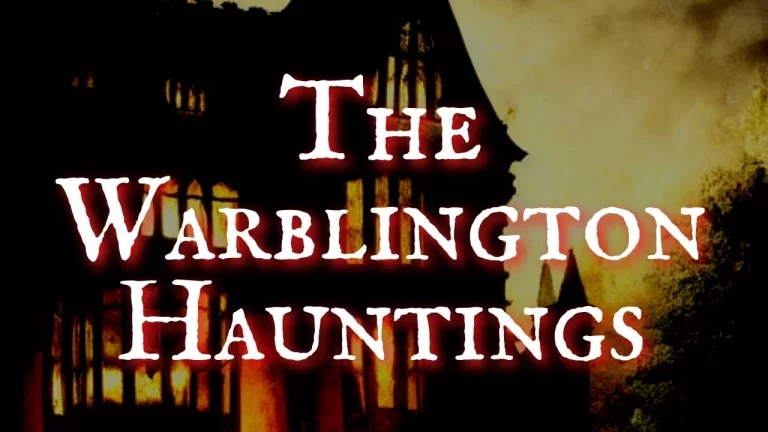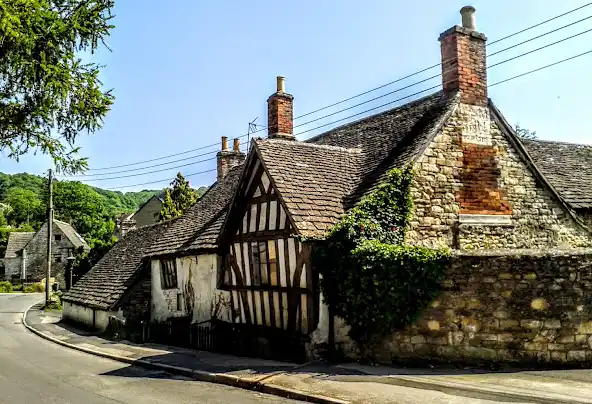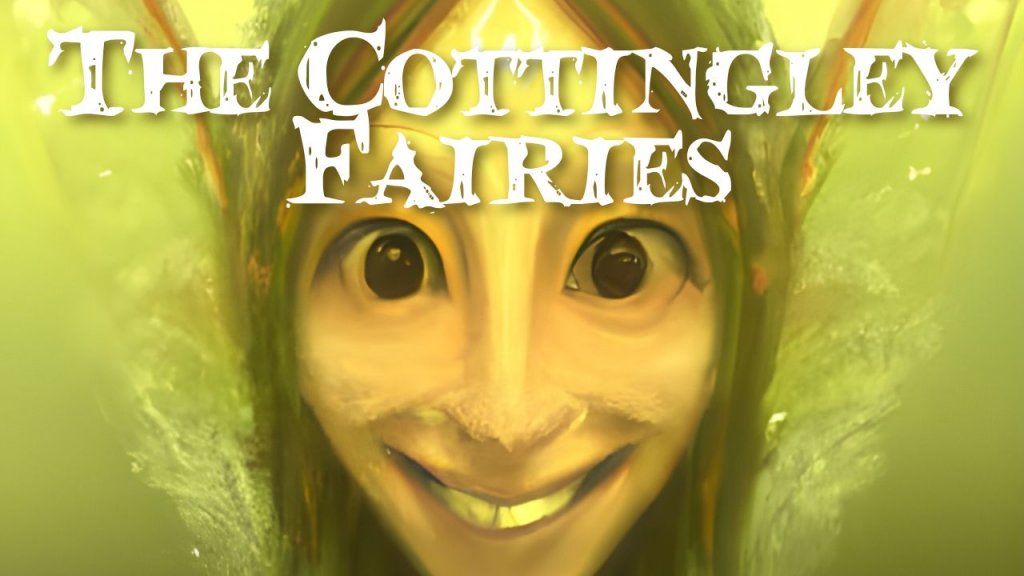
Real Pictures of Fairies?
This is the true story of the Cottingley fairies. That is to say, the events described below are true. Whether the Cottingley Fairies are real is something for you to decide after reading all the evidence.
The story dates from the early 20th Century, but the Cottingley Fairies became even more well-known after the story was turned into a successful movie in 1997, starring Harvey Keitel. The film was later released on Netflix in 2016. It’s called Fairy Tale.
There have been debates about whether the Cottingley story was true or a hoax from when Sir Arthur Conan Doyle published his article on the Cottingley Fairies in The Strand Magazine in December 1920, right up to modern Reddit groups.
It is fair to say that the balance of belief is that the fairy photos are hoaxes, but not everyone believes that means there are no such things as fairies. Some people are adamant they exist, and there is even a scientific study into fairy sightings, which continue today. I will link this at the end.
The Origin of The Cottingley Fairies
The story begins on a Saturday afternoon in July, 1917, when an engineer named Arthur Wright went into the darkroom to develop a photograph taken earlier in the day by his 16-year-old daughter Elsie.
Elsie had been playing with her 11-year-old cousin, Frances Griffiths. Elsie’s mother and Frances’s mother were sisters, and Elsie and her mother had just come to England from South Africa.
The two girls would often play at the beck and come back with wet clothes and shoes. Their mothers told them off for getting wet and asked why they always went to the beck. The girls replied that they went to see the fairies’ larking.
Their mothers didn’t believe them and thought they were being naughty, so Elsie took her dad’s camera and came back 30 minutes later with “proof” that fairies existed.
As the plate developed, Arthur Wright saw vague white shapes. At first, he took them for birds. But when the picture became clear, he was startled to see that they were indeed fairies. Or they were apparently fairies.
The picture showed a serious-faced little girl, Elsie Wright’s cousin Frances, then aged 11, standing behind a bush, her chin propped on her hand, and in front of her, dancing on top of the bush were four neat little female figures with wings and diaphanous garments. One of them was playing a panpipe.
“What on earth are they?” Said Arthur Wright to his daughter Elise, standing behind him.
“Fairies,” she said, in a very matter-of-fact tone.
Working-class Yorkshiremen are famous for their no-nonsense nature. If Wright believed Elsie was away with the fairies—either in a literal or figurative sense—he kept his peace. He was also aware of young Elsie’s artistic talents, so he didn’t ask her for further details or elaboration. He merely awaited further developments.
These came two months later, when the girls again borrowed his camera. Elsie and Frances scrambled across the deep stream, or beck, as we would call it, that ran at the bottom of the garden and went to the old oaks in the dell beyond.
When Arthur Wright later developed the plate, it showed Elsie sitting on the grass holding her hand out to a gnome who was apparently about to step up onto her dress. This gnome was about a foot tall. Arthur Wright accused his daughter and his niece of playing pranks.
His wife Polly, however, believed the girls.
At her prompting, Arthur and Polly looked through the girls’ bedroom, hoping to find cutout pictures that would explain the photographs. They found nothing. Arthur Wright became mildly exasperated when both girls insisted there had been no trickery–that there really were fairies at the bottom of their garden.
He told Elsie she couldn’t use the camera again until she told him the truth.
In November 1917, Frances wrote a letter to a friend in South Africa called Johanna Parvin. She enclosed one of the photographs and remarked casually that,
“It’s me with some fairies up at the beck.”
On the back of the picture, she wrote:
“It is funny, I never used to see them in Africa. It must be too hot for them there.”
These events took place in the village of Cottingley in Yorkshire, on the road from Bradford to Bingley.
It has long since ceased to be a separate village and has become part of the urban sprawl, but the fairy dell still exists. In the summer of 1919 Polly Wright Elsie’s mother went to a meeting of The Theosophical Society in Bradford.
Unlike her husband, Polly was interested in the occult, having had experiences of astral projection and memories of past lives.
The lecture that evening was on fairies, for it is the position of the Theosophical Society that fairies are simply a type of elemental spirit — nature spirits that can manifest themselves to people with second sight or clairvoyance.
Polly Wright couldn’t resist mentioning her daughter’s fairy photographs to the person sitting next to her. He was very interested and asked to see them. Word got around the conference. Everyone wanted to see the Cottingley Fairy photographs.
As a result, Arthur Wright made prints of the two photographs and they were passed from hand to hand at the Theosophists conference at Harrogate a few weeks later, and finally made their way to London and into the hands of Edward Gardner, who was the president of the London branch of the Theosophical Society.
Gardner was familiar with faked photographs of ghosts and spirits and decided that these looked doubtful. He asked his correspondent if he could let him see the glass-plate negative. When these arrived a few days later, Gardner was surprised to find no evidence of double exposure or other cheating. He took the negatives to photography expert Harold Snelling, who examined them carefully under a powerful lens and announced that it was undoubtedly not a double exposure, nor were the dancing fairies made of paper or painted onto a sheet of glass.
Harold Snelling felt the fairy figures had moved during the exposure. One might take that to suggest they were alive. One might.
A week later, after enlarging the photographs, Snelling announced that, in his opinion, they were not faked. They were ordinary, open air shots.
Sir Arthur Conan Doyle and the Cottingley Fairies
It so happened that Sir Arthur Conan Doyle, the creator of Sherlock Holmes, and a convinced Spiritualist, had agreed to write an article on fairies for the Christmas number of the Strand Magazine in which Holmes first appeared. These seemed splendid material for his article.
When he heard about the photographs, he contacted Gardner and asked if he could see them. The two men met and agreed that the pictures were too good to be true.
The waterfall in the background, which looked like a painted backcloth, the highly appropriate toadstools. Gardner agreed to go to Cottingley to see the girls and to find out whether they were hoaxers.
Mr. And Mrs. Wright were startled to hear that the experts thought the photographs genuine, and Gardner was startled when he walked up the Glen with Elsie and saw the scene exactly as she had photographed it, complete with waterfall and toadstools — although without fairies. Gardner decided to test the girls.
Two cameras were brought and the film plates were sealed so they couldn’t be tampered with, and, in due course, the negatives were returned to Gardner and the factory that had produced them. The factory verified that the plates were still sealed and hadn’t been changed.
One photograph showed Frances with a fairy leaping close to her face. Another showed a fairy offering a flower to Elsie, while the third showed two fairies in the middle of a bush.
In the center of the picture, there’s an object that looks rather like a bathing costume hung on a line. Elsie apparently had no idea what it was, but Gardener, with his fairy knowledge, identified it as a magnetic bath, which fairies weave in dull weather. It had rained continually that August. Once more, the experts got to work to discover if the photographs had been faked.
Some sources say that again, they concluded they were genuine. They were checked by two big photographic companies: Kodak and Ilford. Kodak declined to issue a certificate to say they were authentic and Ilford, who felt ‘there was some evidence of faking.’
Despite this, Conan Doyle treated the photographs as if they were genuine pictures of real fairies.
That Christmas Doyle’s article on the fairies appeared in the Strand magazine and caused a sensation. Inevitably, most people thought it was a hoax, yet no expert on photography could say anything conclusive about how it might have been done.
Further Investigations of the Fairy Photographs
A reporter on the Westminster Gazette learned the true identities of the girls. Conan Doyle had used pseudonyms to protect them from publicity, but this new reporter discovered who they were and went to see them.
After interviewing them, he concluded everyone seemed honest and genuine, and there was no evidence of trickery.
Elsie’s father Arthur Wright was baffled by it all and deeply disappointed that Conan Doyle was naïve enough to be taken in
‘bamboozled by our Elsie, and her at the bottom of her class.’
Conan Doyle contacted a well-known clairvoyant named Geoffrey Hodgson and Hodgson went to Cottingley and talked to the girls, and went to the dell with them. He also saw fairy forms.
By the end of 1921, most people had lost interest in the fairies.
Conan Doyle wrote a book about the case called The Coming of the Fairies, which came out in 1922, but there was no reinvestigation.
The Case Reopens
In 1965, Elsie, then in her sixties, was tracked down in the Midlands by a Daily Express reporter, Peter Chambers. His own conviction was that the pictures were faked, and Elsie’s comment that people should be left to make up their own minds on the subject only deepened his skepticism.
Elsie made the curious remark
“As for the photographs, let’s say they are pictures of figments of our imagination, Frances’ and mine, and leave it at.”
In 1971, Elsie was asked by the BBC’s Nationwide program if her father had had a hand in the taking of the photographs.
She replied, “I would swear on the Bible that father didn’t know what was going on”, but when asked if she would swear on a Bible that the photographs were not tricks, she replied after a pause.
“I’d rather leave that open if you don’t mind, but my father had nothing to do with it. I can promise you. “
Again, she seemed to come close to admitting there was some kind of fraud. On the other hand, when Frances was asked by Yorkshire Television if the photographs were fabricated, she replied, “Of course not. You tell us how she could do it. Remember, she was 16, and I was 10. Now then, as a child of 10, can you go through life and keep a secret?”
This, it seemed, was the chief argument in favor of the fairy photographs. That it seemed unlikely that Frances and Elsie would and could keep such a secret for so long.
Frances made this comment in 1976. The occasion was a television program about Frances and Elsie which had been suggested by the Yorkshire Psychical investigator, Joe Cooper, which is why on September the 10th, the two women turned up at a house on Main Street, Cottingley opposite the house where the Wright family had lived half a century earlier.
In the meantime, Elsie had lived in India with her husband, Frank Hill, a Scottish engineer. Frances had married a soldier Frank Way and had spent much time with him abroad. Joe Cooper describes Frances as a bespectacled woman of middle class and height, wearing fashionable denim clothes with a dash of red and black about the scarf and blouse.
Elsie, when she arrived. Looked a good 10 years younger than her 75. Dressed in fashionable slacks and mod gear with a black Billy-cock hat. During the day, Cooper became friendly with the two women, even carrying Elsie over a stile. The camera team interviewed locals who all expressed extreme skepticism about the photographs and filmed the women down by the beck.
Interviewer Austin Mitchell made no secret of believing that the case of the Cottingley fairies had started as a joke and then got out of hand. Cooper was inclined to believe. On camera. Elsie and Frances identified the place where they’d seen a gnome and flatly denied that they had fabricated the photographs.
“Of course not,” said Frances. when interviewed by Mitchell. Joe Cooper stated his view that the girls had seen an elemental form of fairy life — that is to say, nature spirits. After all, WB Yeats and thousands of his fellow countrymen were quite certain about the existence of fairies.
The Truth About The Cottingley Fairies
In 1977. There was an interesting development.
A researcher named Fred Gettings working on 19th century fairy illustrations came upon ‘Princess Mary’s Gift Book’ published during the First World War to make money for the Work for Women Fund.
It contained a poem called A Spell for a Fairy by Alfred Noyes, and this was illustrated by Claude Shepperson and two of the fairies in his illustration were virtually identical with the fairies in the first Cottingley photograph showing Frances looking over the heads of five prancing fairies. Their positions had merely been reversed.
In August, 1978, the new scientist reported that the magician James Randi — The Amazing Randi — and the Committee for the Scientific Investigation of Claims Of the Paranormal (CSICOP) put the photographs through an image enhancement process and found that this revealed strings holding up the fairies.
When Joe Cooper told Elsie about the article, she merely laughed and pointed out that there was no way in the region of the beck where a string could be strung.
After a TV play about the fairies had been broadcast in October 1978, Randi expressed indignation that the BBC had failed to state clearly that the photographs had been proved to be fakes.
In 1981, Joe Cooper was writing a book on telepathy and had some correspondence with Frances, who now lived in Ramsgate about it. In September 1981, she asked him to see her, telling him that there were some things he should know. When he arrived, she was still not ready to specify what these were, but the following day she asked him to drive her to Canterbury.
Once there, she asked him to wait for her while she went into the cathedral.. When she returned, they sat in a coffee bar and she asked him what he thought of the first fairy photograph. He commented it had been touched up. Then Frances dropped her bombshell :
“From where I was. I could see the hat pins holding up the figures. I’ve always marveled that anybody ever took it seriously. “
“What are you telling me? Asked the flabbergasted investigator.
“Because Elsie has already told Glenn.”
Glenn was Elsie’s son.
“What about the other four? Are they fakes?”
“Three of them. The last one’s genuine. “
Cooper and Frances now discussed writing a book together and giving Elsie a share in the proceeds. Frances was adamant at Elsie should play no part in writing the book. Cooper went to London to talk to his publisher. Fortunately, the publisher was not interested in a 60-year-old story about fairies. Particularly when it ended so anticlimactically.
Colin Wilson had also got involved. He met Joe Cooper at a weekend conference on parapsychology at the Swanick Conference Center in Derbyshire in 1980, and he told Colin Wilson he had written a book on the Cottingley fairies. This, of course, was a year before Frances told him the true story.
He sent Wilson the typescript, and he found it fascinating. Wilson had also come across people who claimed to have seen fairies. One of them a hardheaded Scottish TV interviewer, and he was simply not willing to rule out the possibility that nature spirits might exist. Joe’s own researches into the paranormal had convinced him that elementals could not simply be ruled out as an absurdity.
In fact, Colin Wilson was on his way to Yorkshire to research the black monk of Pontefract, an investigation that led him to accept that poltergeists are spirits and not simply a form of recurrent, spontaneous psychokinesis. So it was hardly logical for Wilson to deny the existence of nature spirits because only a child could believe in them.
But even in its original version, the problem with Joe Cooper’s book it was obvious that the story was too slight. It could be told in 50 pages the rest had to be some kind of padding. And since, at that point, both Frances and Elsie were still insisting that the photographs were genuine, there was no real conclusion.
Wilson tried to find a publisher for the book, but was unsuccessful, and Joe Cooper said he wanted to rewrite it anyway, and there the matter rested. It was in the following year that Frances finally came clean.
Oddly enough, Joe was excited that the case had finally reached a definite conclusion. When he told Wilson about Frances’ Confession, Wilson was less optimistic.
If the book ended with Frances’ Confession, it would be a damp squib. Joe Cooper came to the same conclusion late in 1982, a part-work called the Unexplained on which Wilson was a consultant editor, published his article, Cottingley at Last, the Truth in which he revealed that the fairies in the first four photographs were cut outs stuck to the branches with hat.
Understandably, this upset both Frances and Elsie. When Frances called Joe’s wife on New Year’s Day, 1983, and Joe answered the phone, she called him a traitor and hung up. She died in 1986. Elsie died in 1988, maintaining to the end that she did not believe in fairies, which seems to be the end of the story.
Or is it?
The Later History of the Cottingley Fairies
Certainly the skeptics are justified in regarding the cases closed. Possibly they are correct. Yet, before we make up our minds, there’s a great deal more to be said. What Frances is asking us to believe is this. She came to England from South Africa in 1917 when she was 10 and went to stay with her 16-year-old cousin, Elsie in Cottingley.
Elsie had always been fascinated by fairies and claimed to have had some odd ghostly experiences. She insisted that when she was four; she was regularly visited in bed by a woman in a tight dress buttoned up to her neck, and when she was six, she woke up one night and called for a drink when no one replied she went downstairs and found a strange man and woman in the house.
She asked where her parents were and was told they’d gone out to play cards with the neighbors. When Elsie said she wanted to find them, the man opened the front door for her.
Her parents, who were in fact playing cards with the neighbors, were alarmed to hear about the man and woman, for they had left the house empty, but when they went to investigate, the house was empty.
Frances had had no psychic experiences, but in the spring of 1918, she saw her first gnome. She had gone down to the back after school when she noticed a phenomenon she had rarely observed before — a single willow leaf had begun to shake on the tree by the stream.
Then a small man all dressed in green was standing on the branch Frances watched breathless, terrified of disturbing him. Then the little man looked straight at her and disappeared. After that, she claimed she often saw little men wearing coats of grayish green and matching caps by the back. She gradually reached the conclusion that the little men were engaged in some kind of purposeful activity, perhaps associated with helping plants.
Later, she saw fairies with and without wings. These were smaller than the elves with white faces and arms and often seemed to be holding hold some kind of meeting.
Elsie, she insists, never saw the fairies or little men. It was after falling in the stream yet again at Frances, admitted that she went to see the back to see fair.
It was the total skepticism of the adults that led Elsie to decide to take some fairy photographs. This was not a simple desire to deceive.
Elsie believed Frances when she said she saw fairies. Her own psychic experiences made it plausible. She wanted to shake the credulity of the grownups, so the photographs were taken with cutouts propped up by hat pins.
When the world suddenly became interested in their fairies, they were in a really difficult position. The photographs were fake, but the fairies really existed. If the whole thing had been a hoax, it would’ve been easier to confess, but it was not a hoax, not totally. Anyway, they were in an embarrassing and anomalous position.
If they admitted the photographs were fake, they would imply that the whole affair was nothing but a fake as well. And that would be as untrue as continuing to maintain that the photographs were genuine, so they kept silent when the whole affair blew up again.
In 1965, the situation was more or less unchanged. Elsie, now a hardheaded woman in her sixties, was no longer so convinced that Frances had seen fairies, yet she was absolutely certain that she had had psychic experiences and was therefore prepared to be open. As Frances, she had seen fairies and had nothing to retract.
In a letter to Leslie Gardner, the son of Edward Gardner, Elsie remarked that after her interview with Peter Chambers in 1965, in which she had declared that people must judge for themselves and that the pictures were figments of our imaginations, Frances had said, indignantly.
“What did you say that for? You know very well that they were real.”
Frances had always maintained that the fairies were real.
Other Sightings
In his original typescript of the Cottingley book, Joe Cooper had included a chapter called Other Sightings comprising accounts of fairies related to him by other people, and that makes clear why you believe Frances one man a healer, told how he was sitting with a girl in Gibralter eating a sandwich when it was snatched from him by a little man.
About 18 inches high. An 80-year-old officer of The Theosophical Society insisted that when he was a small boy, he was often visited in bed by a green clad gnome. Another man described seeing a green clad gnome about two feet high, walking along a path in a cornfield. Some young students told how, when walking in the wood near Bradford, they saw fairies who were circling and dancing, but were invisible to the direct gaze.
They could only be seen out of the corner of the eye.
An elderly lady showed Cooper a photograph of a gnome seen through a frosty window. She claimed that she had come down one morning, seen a gnome and rushed upstairs to get her camera. The photograph also shows diminutive white rabbits.
In his book, Modern Psychic Experiences, Joe Cooper publishes most of these accounts together with many more.
A New Zealand medium named Dorothy described how she used to play with a spirit girl called Mabel as a child, and how she had first seen fairies who came from under plants. One day, she came home to find her father unconscious on the floor. A gastric ulcer had perforated, and the fairies took charge and escorted her to the door of the doctor.
Joe Cooper’s own niece, Jo, in her thirties, described how at 16, she had seen three small men crouching on top of a. When Colin Wilson wrote about the Cottingley fairies in Poltergeist, he also went to some trouble to find accounts of real fairies.
He described being interviewed on television at the 1978 Edinburgh Festival by a man called Bobby, whose surname he forgot to note in his journal, in the pub next door.
He told Wilson casually that he had once seen a gnome standing on the pavement outside a convent gate, and that it had scared the hell out.
Colin Wilson’s friend, Mark Alexander, author of many books on the paranormal, told him a story of a friend in New Zealand called Pat Andrew, who claimed to have seen a pixie when he was six.
Years later, after seeing a stage hypnotist, Mark and Pat Andrew began experimenting with hypnosis on one another. Mark had no doubt that Pat Andrew was genuinely hypnotized and one day tried to regress him to the age at which he saw the pixie. The result was an amazing one-sided conversation that left Mark in no doubt, whatever that, whether Andrew had really seen a Pixie, he undoubtedly believed he had.
One of the most circumstantial accounts Wilson tells of an encounter with a pixie is recounted by another friend Lois Borne in her book, A Witch Among Us, Lois is a witch in the sense of possessing odd psychic powers of whose re reality. Colin Wilson has not the slightest doubt.
She is an extremely sensible and down-to-earth lady, and in her book among many stories that psychic researchers will find credible enough, she tells a story that will obviously cause most readers to doubt her truthfulness. Staying on holiday cottage at Crantock in Cornwall, she met another member of a Wicca coven and spent an evening at her home.
The woman’s husband, Rob, asked her if she would like to see a goblin. One appeared among the rushes of the millstream at Treago Mill in Cubit’s Heath every morning at sunrise, and if she wanted to see him, she had to be up early. The next morning, Lois and her husband Wilfrid joined Robert at the mill gate, and they crept up to the stream.
“I have never been able to decide and still cannot decide whether I really saw that goblin, or if Rob made me see it, whatever it was there, sitting on a stone calmly washing his sock was an elfin creature with a red hat, a green coat, and trews one yellow sock on, and one in his tiny hands in the process of being washed.”
“I remember thinking at the time in my sleepy, befuddled, but practical way, what an atrocious color combination. Suddenly, he saw us and he disappeared. “
“Now, do you believe me?” asked Rob.
Colin Wilson says he’s known Lois for years. He says he may be gullible and she may be a liar, but he believes her. She’s not the type to invent such a silly story, and her husband, Wilfrid, who also saw it, is not the type to support a downright lie.
The Modern History of Fairy Studies
As already mentioned, the poet WB Yeats had been convinced of the existence of fairies ever since he and Lady Gregory went from door to door collecting information from the local peasants. They recorded these interviews in a book called Visions and Beliefs in 1920,
Evans-Wentz concludes in his The Fairy Faith in Celtic Countries by saying,
“We seem to have arrived at a point where we can postulate scientifically the existence of such invisible intelligences as gods, genii, demons, all kinds of true fairies and disembodied men.”
By the latter, he means ghosts, and he cites the very sound evidence for the existence of the poltergeist.
George Russell and Evans-Wentz emphasize these entities are seen only by psychics, and Russell believes such beings are not individuals in the human sense.
“Theirs is a collective life, so un-individualized and so calm that I might have more varied thoughts in five hours than they would have in five.”
When all this is really considered, we may feel that the notion that Frances really saw fairies by the Beck in Cottingley no longer seems so absurd.
The Fairy Investigation Society
I have a subscription to the Fortean Times and one of my favorite bits in the Fortean Times is from Dr. Simon Young, who writes a column about fairies.
Dr Young is in charge of the fairy census. With volunteers, he runs the census and they collect stories of people who’ve come across these creatures — and are still coming across them and they have got a database.
It’s really fascinating. People still see these creatures. And if you want to join, there’s a thing called the Fairy Investigation Society, which is dedicated to the tracking down of modern accounts of the little people.
The Fairy Investigation Society was founded in 1927, which of course is against the same background as we’ve talked about — only 10 years after the Cottingley fairies.
It was founded by two quite eccentric men. Quentin A Crawford, a retired British naval officer of aristocratic lineage, who had been a decorated naval officer in the Royal Navy, but who was also a talented scientist, including carrying out the first wireless broadcasts in Britain from HMS Andromeda in 1907.
Crawford he was very interested in the paranormal, long convinced that psychic communication with animals was possible, particularly during dreams. And his advice to anyone apparently who found a fledgling or a stray cat would’ve been to sleep in the same room as the animal. Then you find out what it wanted.
He was very interested in spiritualism and he took messages from the dead with an Ether Box, which was a kind of radio and became known as the Wireless Man.
The second man who founded the Fairy Investigation Society was Bernard Slay. Slee was an artist based for most of his career, Birmingham in the Midlands of England. And in 1897, he had had a brain operation and had suddenly experienced peculiar visions and became psychic.
The Fairy Census
The fairy census is an ongoing questionnaire about those who see fairies to try to get objective data on fairy sightings — when and where and how.
Extraordinarily, the goal of the census is not to prove fairies exist. In fact, the researcher, Dr. Simon Young, wants to get a better understanding of who sees fairies and under what circumstances these sightings and experiences happen.
In each experience, you’re supposed to put your gender, the time it took place, your age when the experience took place, location, and note:
- Was it near water on a country road, a building?
- Were you alone or with others?
- What was the time and day of the experienced duration? What was the mood of the fairy — friendly, angry, et cetera?
- What frequency do you experience supernatural experiences?
- Is there any special state reported before the experience? Did you just wake up? Were you picking blackberries? Had you been taking hallucinogenic mushrooms?
I made that last one up.
- Were any special phenomena connected to the experience, loss of a sense of time, or profound silence?
We see these in time slip experiences and in UFO experiences, particularly there’s loss of time
But this silence experience is common in time slips.
They don’t publish the joke ones. They don’t publish ones when the respondent was drunk.
The Fairy Census, 2014 -2017, is a free PDF with a beautiful picture in the front.
You can go to The Fairy Census survey here and fill in your experiences and add to the body of knowledge.
I hope you enjoyed this. Slightly less scary than normal, but interesting.
